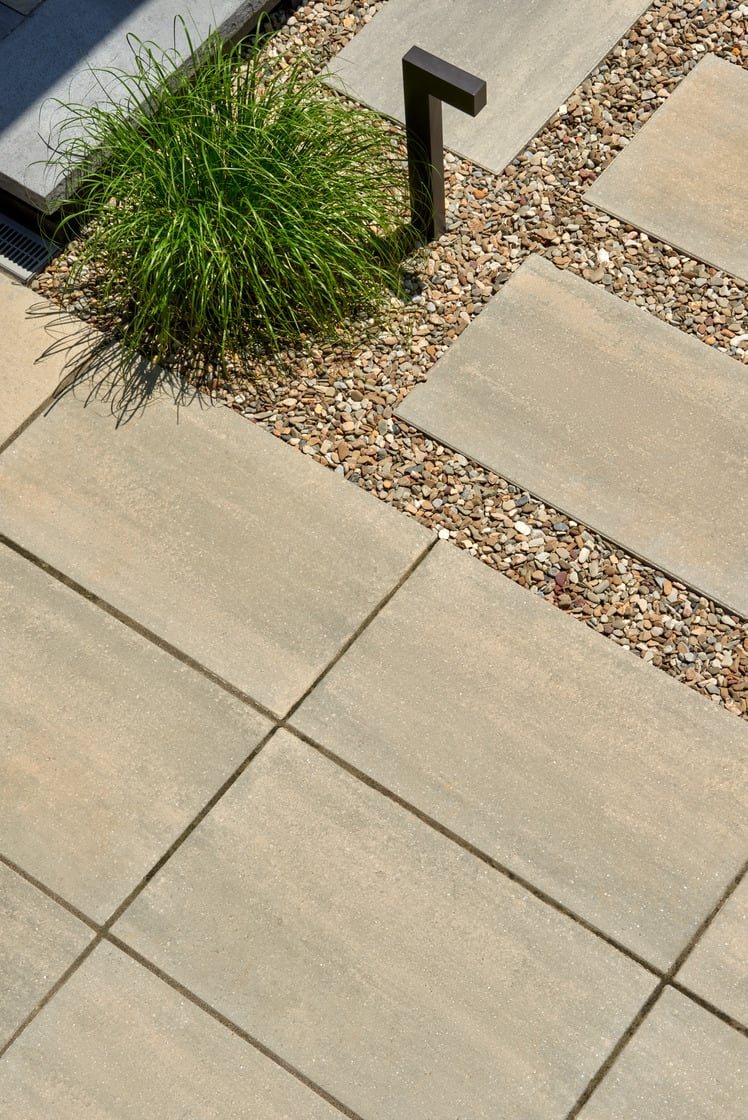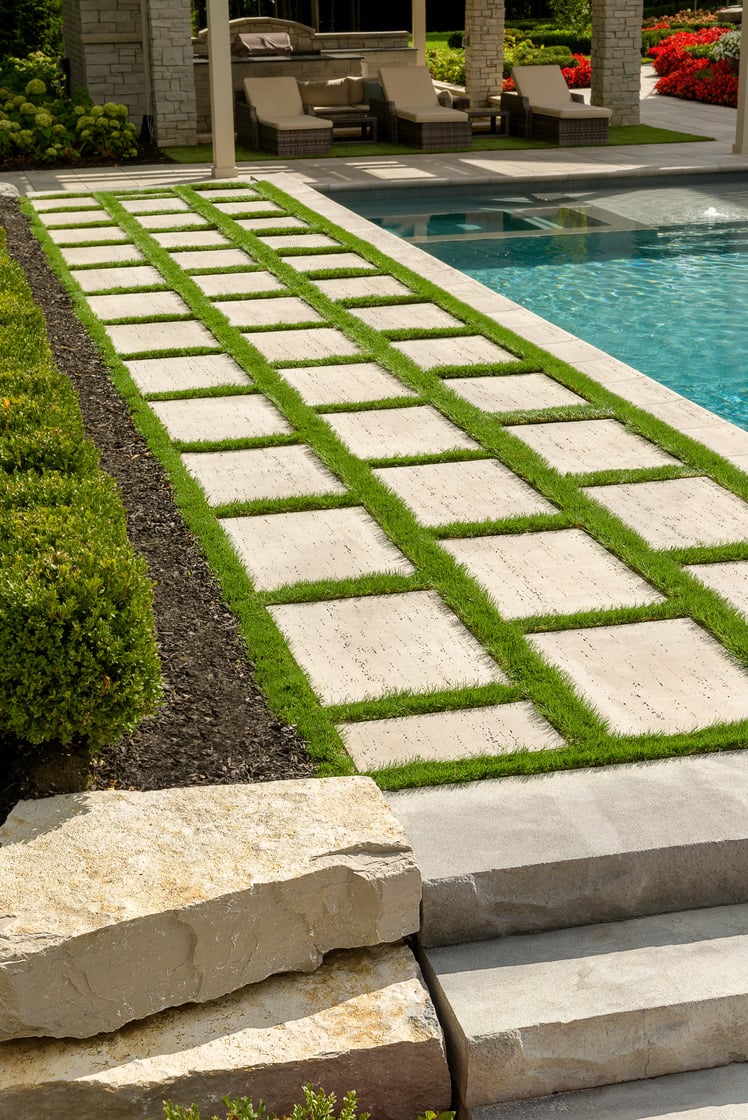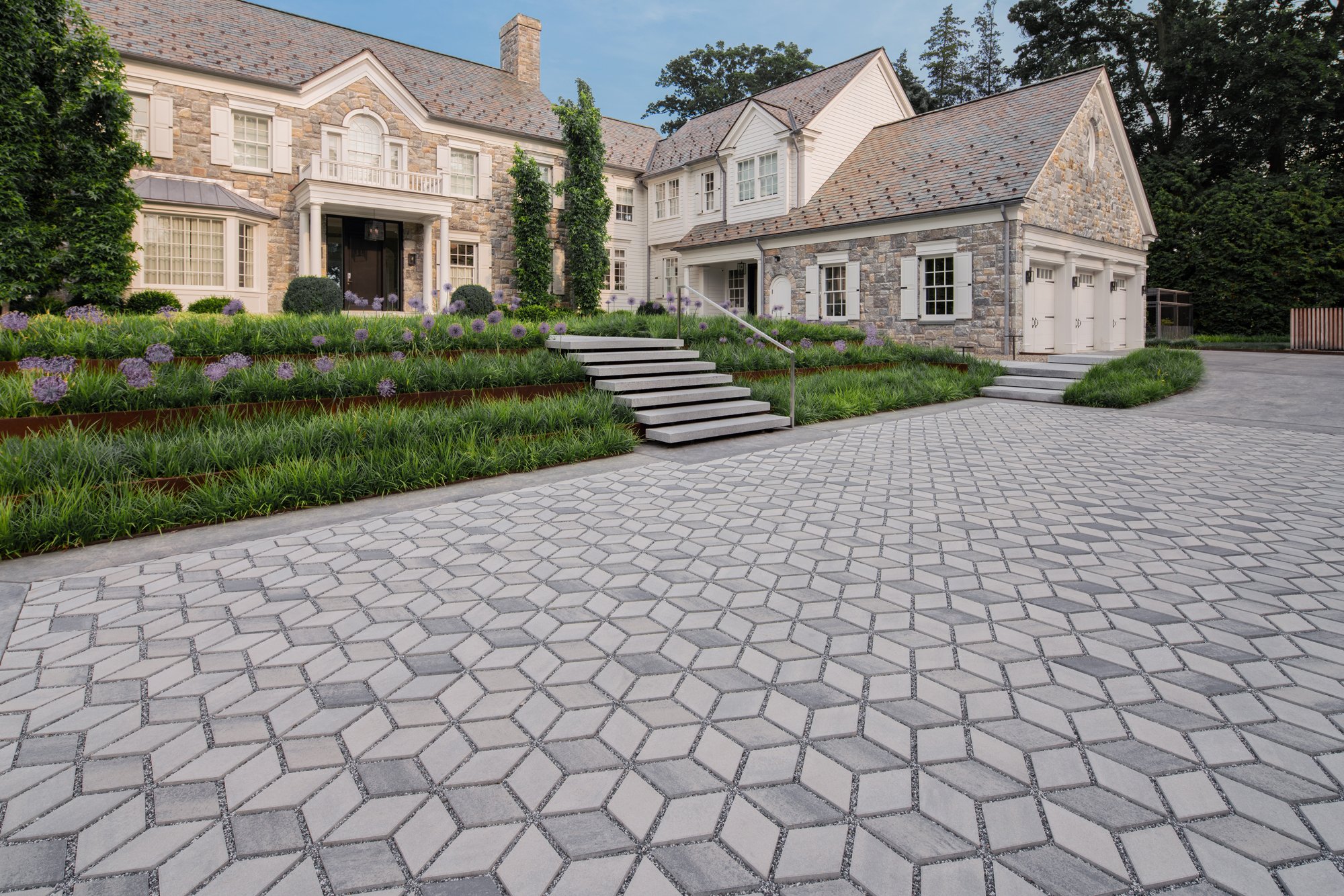Well-manicured, weed-free lawns are giving way to lush vegetable gardens, solar panels, and even backyard coops for chickens as homeowners become increasingly environmentally conscious while also embracing their outdoor spaces as everyday hangouts. Your clients are looking for environmentally sustainable landscaping solutions and permeable pavers are the perfect mix of style and function.
Whether you present clients with a variety of specially designed permeable pavement options or use regular pavers to create a permeable effect, we’ll take you through the basics of how to install a solution homeowners will love.
Why Permeable Pavement
When compared to traditional options, permeable pavements are the clear choice for the environment. By allowing rainwater to pass through the paving stone’s joints and into the ground naturally, they prevent runoff into the sewer system and suspended solids from polluting the water stream.
For contractors, profit loss from rain delays and settlement issues — a well-known risk with traditional paving methods — can be avoided by using permeable pavement.
Ensure your clients know that these can prevent flooding, ice accumulation, and other issues that can occur with surface water accumulation. Not only do they last longer than asphalt and perform in harsh winter climates, but when properly installed by professionals, they increase home value.
One of their strongest selling points for homeowners? Many municipalities across North America offer tax incentives for permeable paver installation. For example, Ottawa’s Rain Ready Ottawa program offers eligible residents up to $5,000 for the implementation of proven rainwater management practices like porous pavers. Furthermore, the design flexibility of permeable installations allows them to bypass local laws that dictate how much of a space can be paved.
Pro Tip: Check with the municipalities in your service area to see which ones offer tax rebates for permeable pavements and include the cost savings breakdown in your presentations.

Our Blu Grande Smooth patio slabs paired with river rocks are the ideal permeable design
Installing Permeable Pavement
From paver style and area design to soil classification and the type of aggregate used, there are a lot of factors to consider in the installation of permeable pavement. The climate as well as the intended use of the finished areas (i.e., driveway, patio, etc.) will also affect the installation process. In the end, your clients are looking to you for a green, modern solution that’s sustainable, safe, and designed with their needs and aesthetics in mind.
Techo-Bloc’s Permeable Pavers Installation Guide provides contractors with detailed, step-by-step instructions, key considerations, and useful tips on achieving a seamless finished design.
10 Steps to Installing Permeable Pavements
- 1. Collect Relevant Date
- 2. Excavate the Area
- 3. Install Geotextile, Impermeable Liners and Drain Pipes
- 4. Prepare Sub-Base
- 5. Install Edge Restraint
- 6. Lay Base
- 7. Add Bedding Course
- 8. Install Pavers
- 9. Fill Paver Joints
- 10. Post Installation
Available in Canadian and US versions
Achieving Permeability with Regular Pavers
For those clients who want the best of both worlds — traditional paver design and permeability — both can be achieved. Installing an open-graded base will give homeowners a wider variety of paver styles to choose from while allowing for all the benefits that come with permeability.
This solution saves hardscapers time and money due to the ease of installation, ability to install in any weather condition and reduced callbacks from washout or settlements issues that are commonplace in traditional installations.

Let nature become part of the overall outdoor design aesthetic
What’s an Open-Graded Base?
An open-graded base allows water to permeate through the base material with minimal resistance. It’s achieved using two different types of aggregates: ASTM #57 and ASTM #8 using the following installation process:
1. Plan, Prepare and Excavate- 2. Identify and Amend Soil
- 3. Install Geotextile Fabric
- 4. Install Base
- 5. Lay Interlock and Install Polymeric Sand and Edge Restraint
Using traditional pavers with an open-graded base will add a contemporary touch to your projects. To tie everything together, fill the gaps with stones, or let the grass grow in between for a pop of color.
“Going green” has gone from being a trendy tagline to a necessary practice. Your clients are asking for environmentally sustainable solutions, local by-laws are mandating them and your competitors are offering them. With permeable paving installations becoming more commonplace, you have an opportunity to become your area’s top installer. And our experts are here to help.



